Lemon Curd Recipe
Lemon curd recipe is a versatile and delicious treat that can be used in a variety of ways. Whether you want to add a tangy taste to your desserts or give your breakfast a citrusy twist, lemon curd can be just the thing you need. In this post, we will explore what lemon curd is, how to make it, and creative ways to use it.

Why this method for making Lemon Curd is different
My Lemon Curd recipe is not like the other ones, because it doesn’t use indirect heat, aka a double boiler. I find that the double boiler takes a really long time, and often times doesn’t yield the thick curd I am going for.
Also, I use whole eggs in the curd instead of just the egg yolks, which yields a curd that doesn’t taste eggy, and also doesn’t waste any parts of the egg.
This post may contain affiliate links. I earn a commission from qualified purchases. Please read our Privacy policy here.
In most of the lemon curd recipes, usually they whisk all the ingredients in a pan and then add the cold butter slowly while cooking. Or they whisk the ingredients over a double boiler. The reason why I prefer my method instead is because it beats the butter with the sugar, eggs, lemon juice, and zest, before cooking it all in a stainless steel saucepan over medium-low heat.
We beat the eggs with the butter and sugar before cooking, is because that helps speed up the denaturation process of the eggs, which is the uncurling of the proteins in the eggs. And that will prevent the curd from having an eggy taste, it will essentially prevent the eggs in the mixture from becoming scrambled eggs.
This method also allows for the curd to be cooked without having to use a double boiler, and way faster. A lot of other methods just put everything in the pan together, but whenever I try those methods, I find that eggy aftertaste of the curd to be unpleasant, which is why I vouch for this method.
What is Lemon Curd?
Lemon curd is a creamy custard dessert spread or topping made from freshly squeezed lemon juice. It can be prepared easily using an electric mixer and a sauce pan. All you need is lemons, sugar, butter, and eggs.
Traditionally, lemon curd is a thick, velvety cream with a tart lemon flavor.
Lemon curd is often used as a topping for yogurt, as a filling for cakes and pies, or even as a topping for desserts. It is so versatile that it can be eaten by the spoonful or swirled into yogurt. I like to use it to fill macarons, pastries, cakes, and cupcakes.
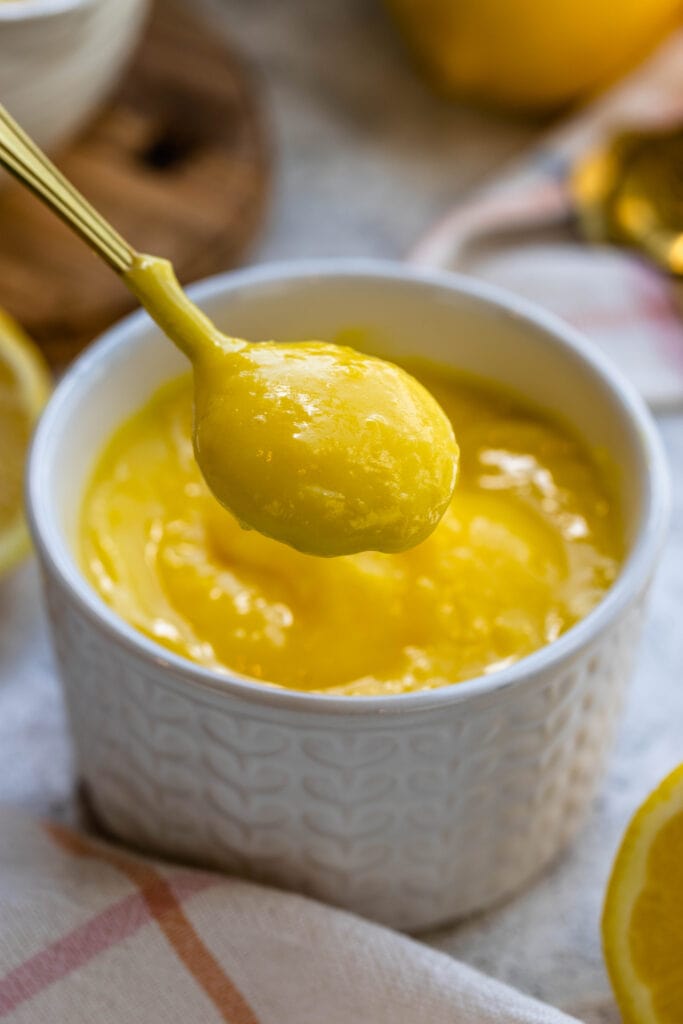
What Ingredients Do I Need To Make Lemon Curd?
- Lemons – Fresh lemons are the key to getting the best flavor. This recipe calls for the zest and the juice, so the fresher you can get them, the better.
- Eggs – In this recipe I use whole eggs. Some recipes use just the yolks. I have experimented with many recipes and this is my favorite, which is why I make it this way.
- Butter – Butter makes the curd creamy and thick, use unsalted room temperature butter.
- Sugar – White granulated sugar is the best to use for lemon curd.
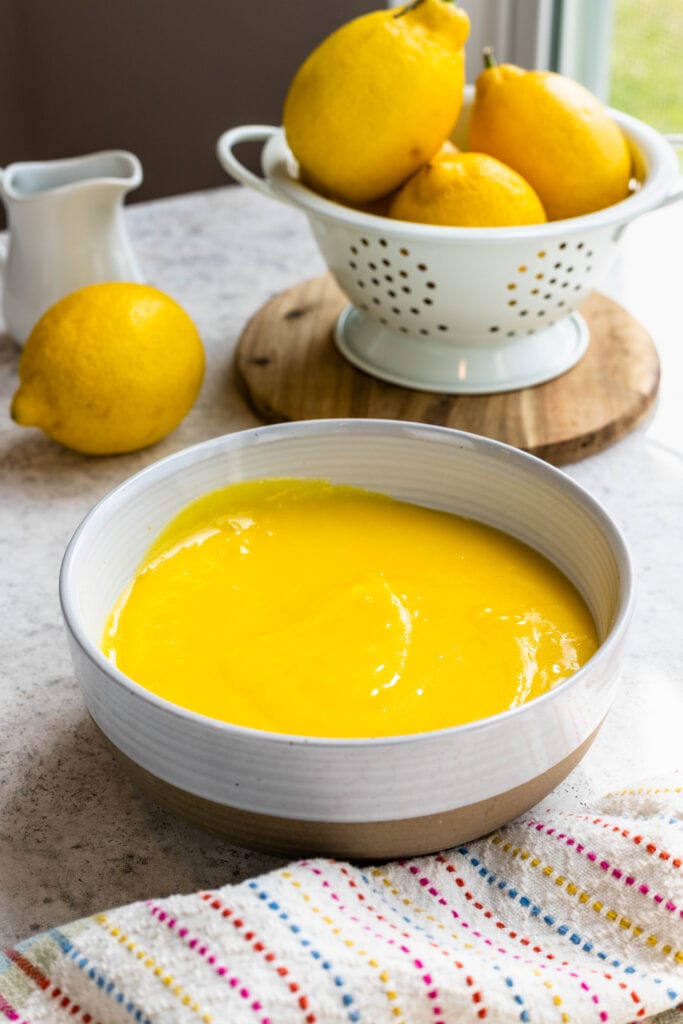
How to make Lemon Curd using direct heat
To make lemon curd, start by zesting and juicing the lemons. It’s easier to zest them first and then juicing them.
Also, make sure to use fresh lemon juice.
Beat the butter and sugar with a mixer.
Add the eggs to the bowl and beat them together with the butter sugar mixture.
Don’t skip this step. If you just place all the ingredients in a saucepan without beating the butter and sugar with the eggs first, the curd tends to taste eggy.
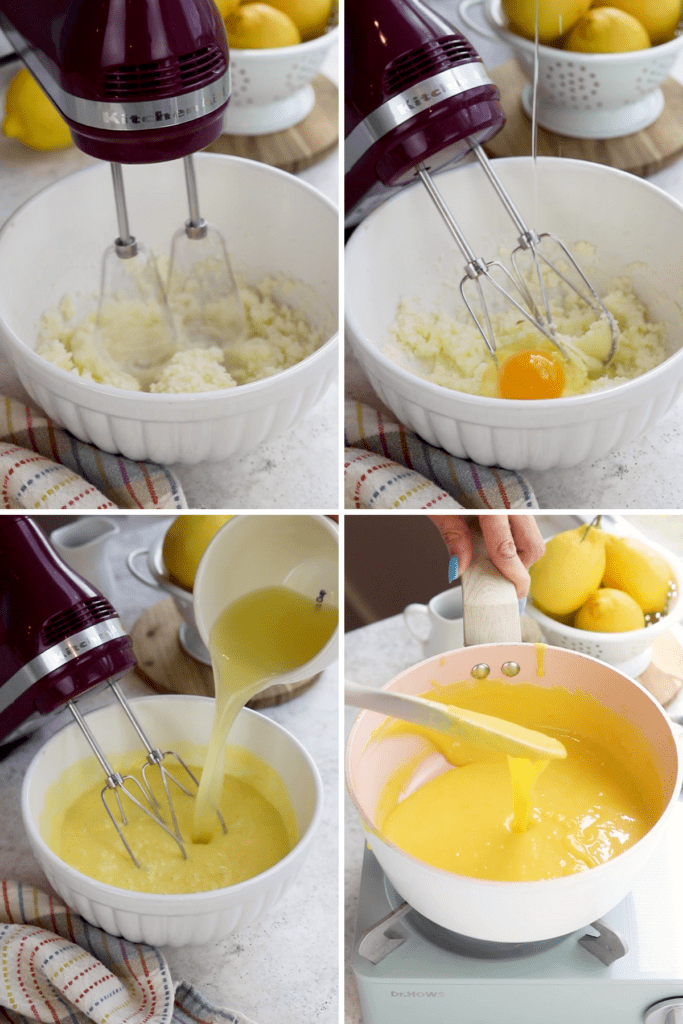
Add the lemon juice and tablespoons of lemon zest and mix.
Transfer the mixture to a saucepan with a heavy bottom. Make sure the pan has a heavy bottom, this is important to avoid the curd from curdling and tasting eggy.
Place it on the stove over medium heat, or medium low heat. If your stove tends to cook things faster, use low heat. Stir and cook the curd and don’t stop stirring, don’t raise the heat. It might take about 10 to 15 minutes.
Remove the curd from the heat when it reaches 170ºF. If you don’t have a thermometer, just cook it until the curd is thick enough to coat the back of a spoon.
It’s important to use a pan with a heavy bottom, and cook on medium-low heat.
Stay away from aluminum pans, they will react with the acid in the curd and give a metallic taste.
Remove the curd to a bowl and let it chill in the refrigerator for a few hours before serving.
You can use a sieve to strain the curd before removing it to the bowl, in case any bits of egg got cooked. However have in mind that if you do that, you will also strain the lemon zest.
Straining the curd will remove the lumps and help it have a smooth texture.
Place a piece of plastic wrap directly on the surface of the curd to prevent it from forming a skin as it chills in the fridge.
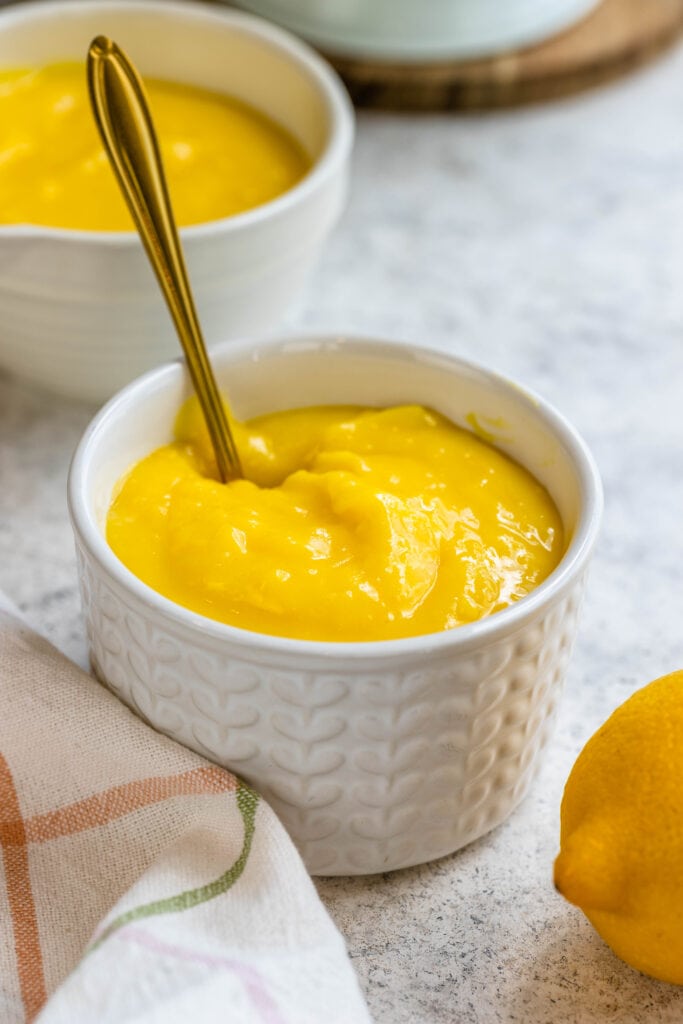
Tips on how to make Lemon Curd:
- Always beat the butter with sugar, eggs, lemon juice, and zest before cooking. This will prevent the curd from tasting eggy.
- Use a pan with a heavy bottom when cooking the curd.
- Stay away from aluminum pan. Use stainless steel instead.
- Cook the curd over medium, preferably low medium heat.
- Strain the curd using a fine mesh sieve to obtain a smooth curd.
How long does homemade lemon curd last for?
Store the curd in a jar, or in a glass container in the fridge for up to 2 weeks. You can also store it in the freezer for up to 1 month.
To thaw, remove the curd to the refrigerator the day before you have to use it.
Why does lemon curd taste metallic?
It’s probably caused by your lemon juice reacting with the metal in your bowl. Similarly, metal can react with the acid in the eggs and sugar in your curd. While lemons have a natural sulphuric flavor, their high acid content can react with aluminum. To prevent this, use stainless steel pans or glass mixing bowls. If you’re using a metal bowl, consider a non-reactive pot instead.
Why does my lemon curd smell eggy?
Lemon curd will smell eggy if you over cook it, or let it cook too fast. That’s why you should use a pan with a heavy bottom, and make sure to cook it low and slow.
How should I store lemon curd?
When storing curd, always keep it in the fridge, in a covered container. Also, remember that lemon curd can be frozen. Be sure to use airtight plastic containers to freeze it.
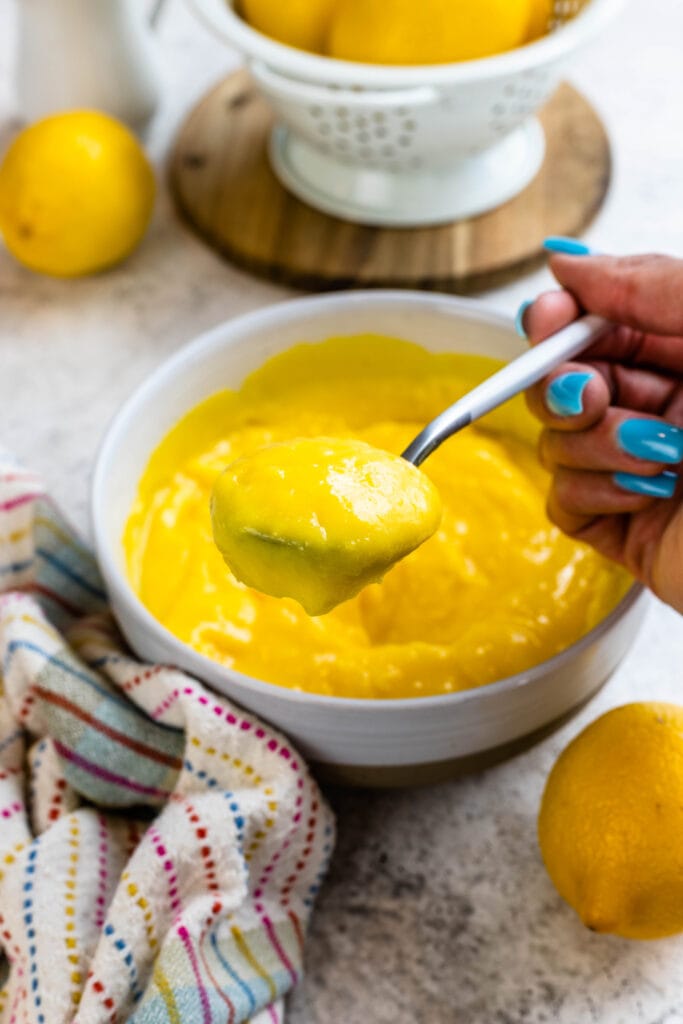
Can I make Vegan Lemon Curd?
Vegan Lemon Curd is a little more complicated, but it absolutely can be done. Instead of using just unsalted butter, substitute coconut butter or vegan margarine with cornstarch, cold water and a pinch of turmeric for color. My Lavender Lemon Vegan Macarons uses a vegan lemon curd and it is scrumptious!
Best Ways To Use Lemon Curd
There are a number of recipes out there that incorporate lemon curd:
- For a sweet dessert for a party, you can make filled cupcakes like Lemon Poppy Seed Cupcakes.
- Treat yourself to an afternoon tea and slather it on scones, a toasted english muffin.
- Use it to top pastries like this Mascarpone Puff Pastry.
- Lemon Blackberry Cake for a special celebration
- Strawberry Lemonade Macarons are the perfect picnic dessert.
- Swirl it into cottage cheese or yogurt for a quick, sweet breakfast.
- Use it to top pancakes or waffles.
- Serve it with toast, or use it to top ice cream.
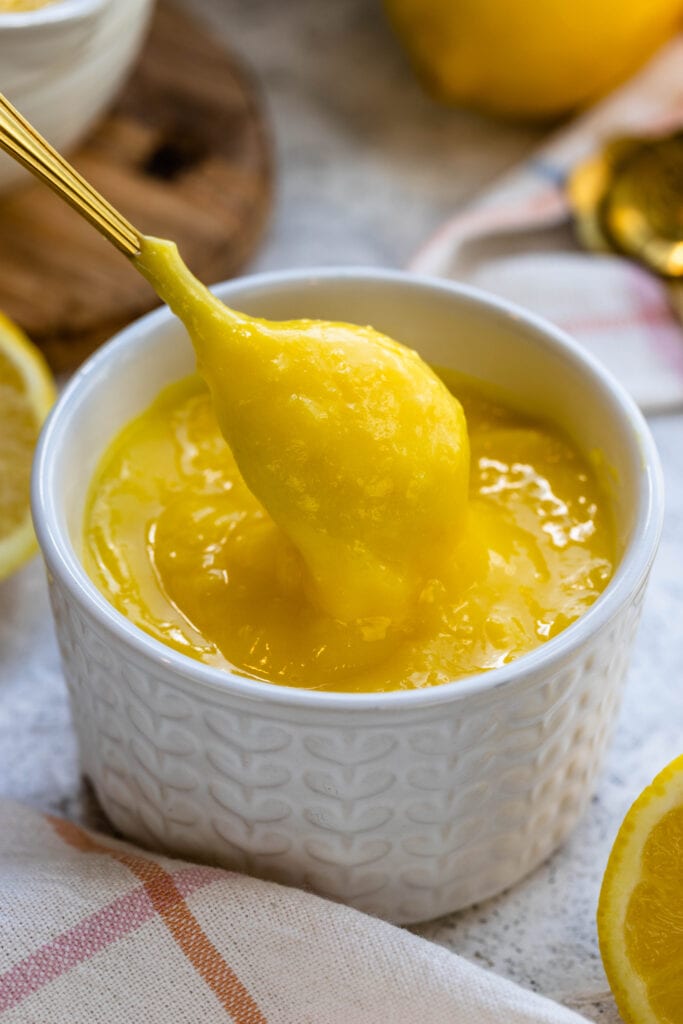
Make sure to save this recipe, pin it to your pinterest board or share it on your Facebook feed so you always have it with you! With simple ingredients, this lemon curd recipe is something you can always throw together when you need to come up with a dessert quickly.
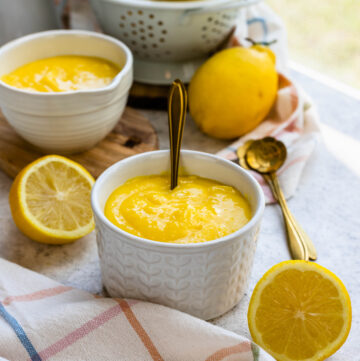
Lemon Curd
Ingredients
Lemon Curd
- 6 tbsp unsalted butter at room temperature 84 g
- 2/3 cup granulated sugar 133 g
- 4 large eggs
- 1/2 cup lemon juice 120 ml
- 6 tbsp lemon zest 30 g
- 1/4 tsp salt
Instructions
Lemon Curd
- To make the Lemon Curd, in a bowl, beat the butter with an electric mixer for 1 minute. Add the granulated sugar and beat for another minute, until creamy.
- Next, add the eggs, one at a time, and mix, making sure the first egg is incorporated before adding the next. Add the lemon juice, zest and salt and mix on low speed until combined. The mixture might look separated and that’s okay.
- Pour it into a small saucepan with a heavy bottom and place it over medium-low heat.
- Make sure you don’t let the curd come to a boil at any point, and don’t stop stirring at any point either, because that will lead to the eggs curdling, and the curd will taste like scrambled eggs.
- Heat the curd slowly until a candy thermometer reads 170ºF (76ºC). If you don’t have a thermometer, the curd should be thick and coat the back of a spoon. Once you achieve a nice thick curd, remove it to a bowl and place it in the fridge for at least 2 hours. The curd will set and get very thick as it cools.


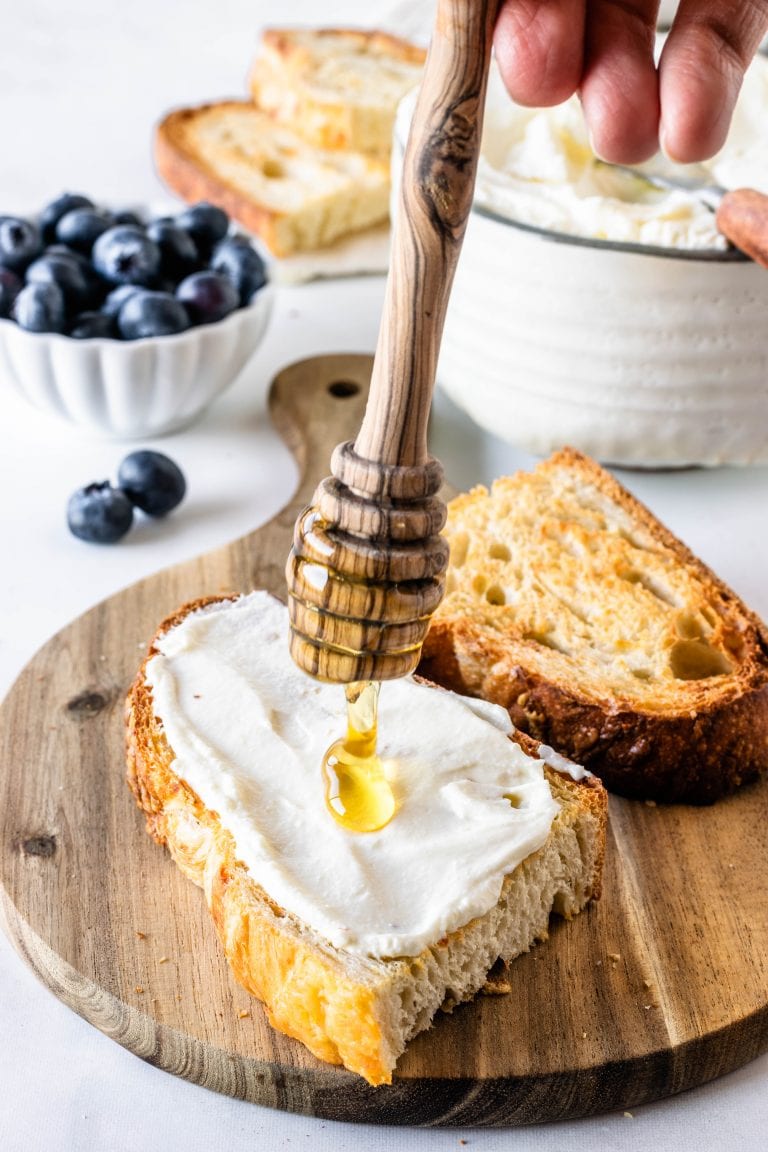
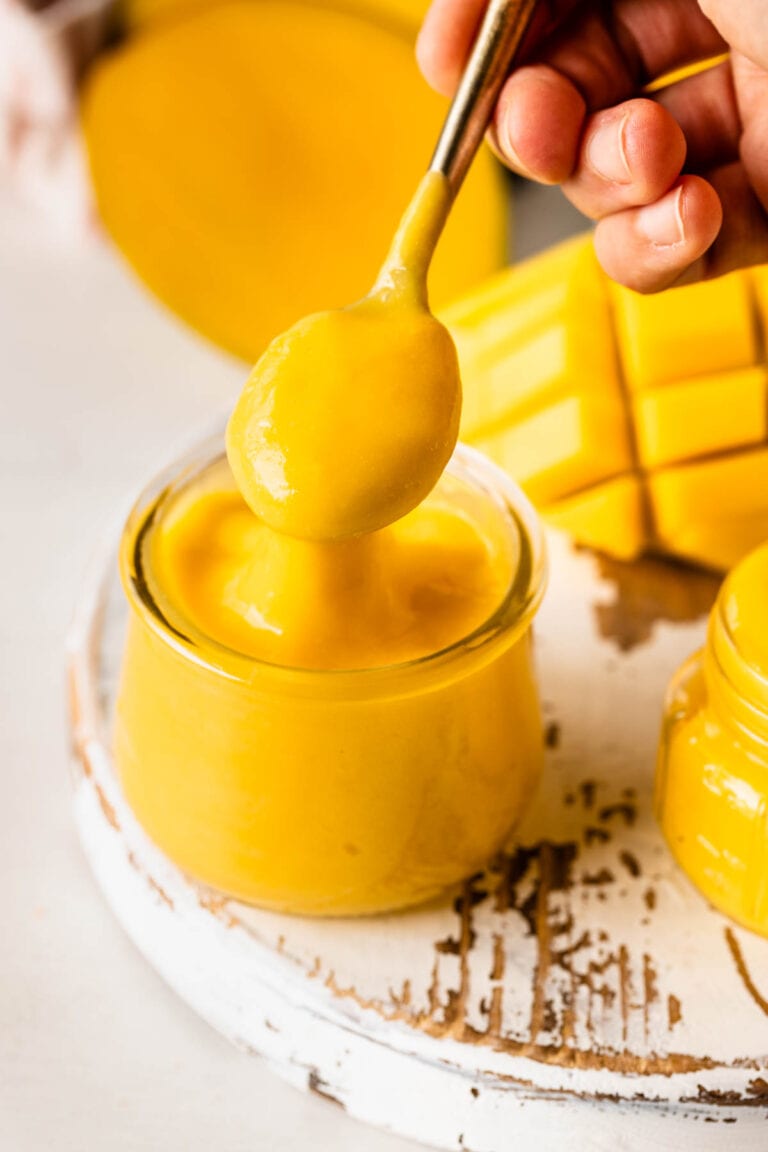
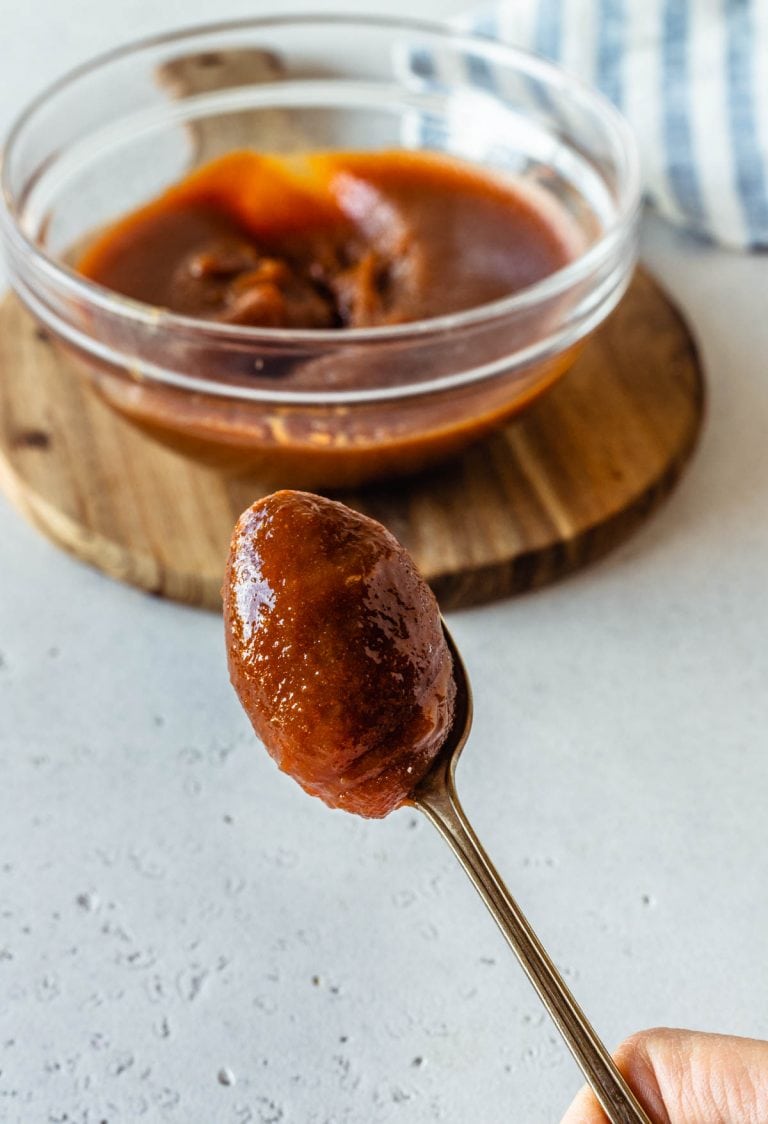
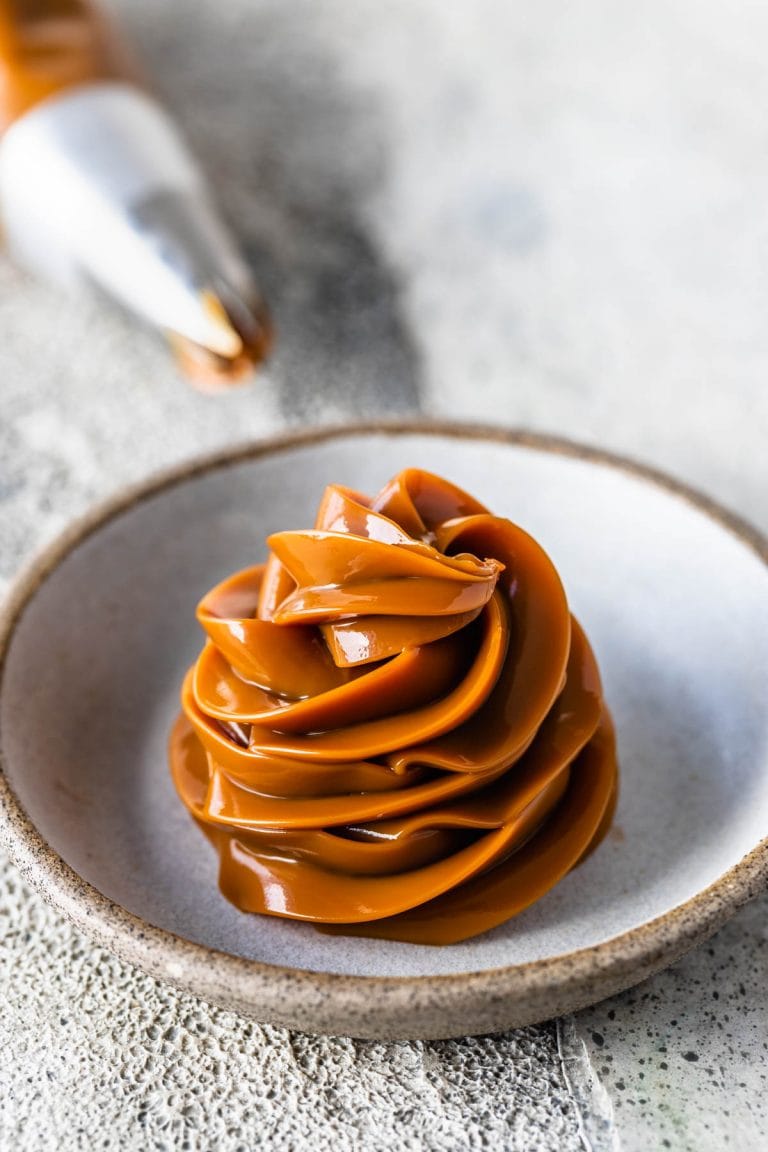
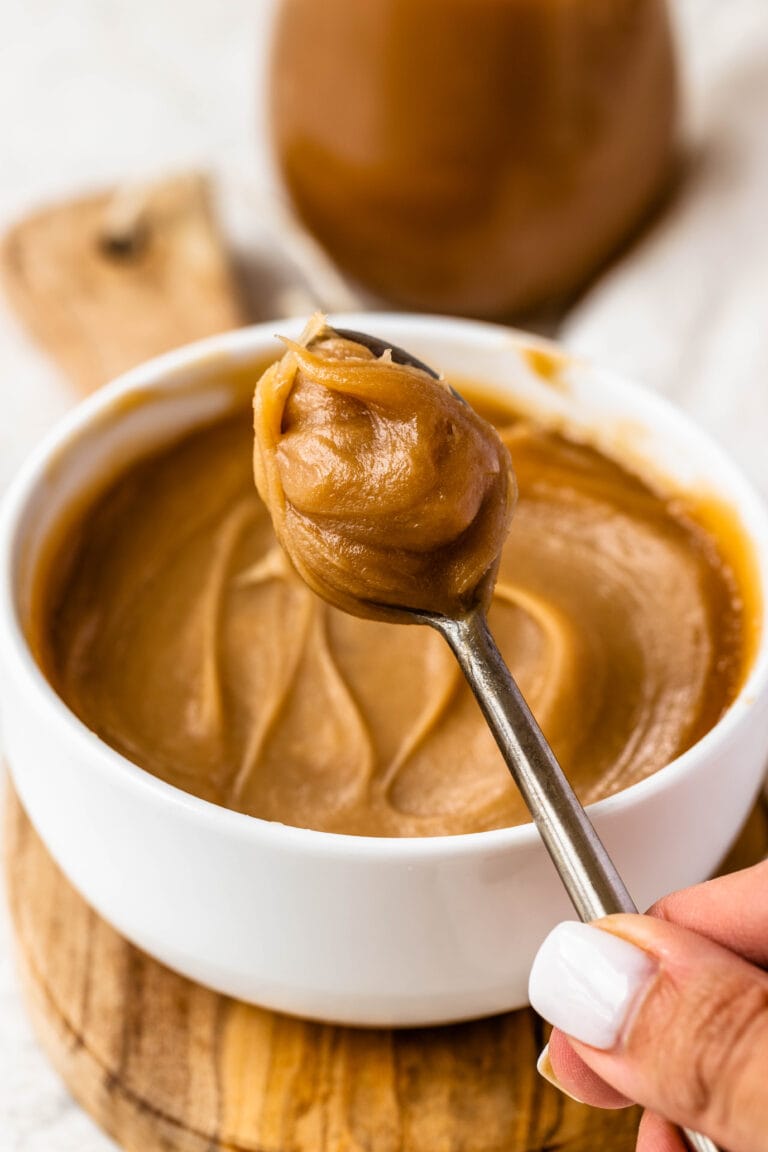
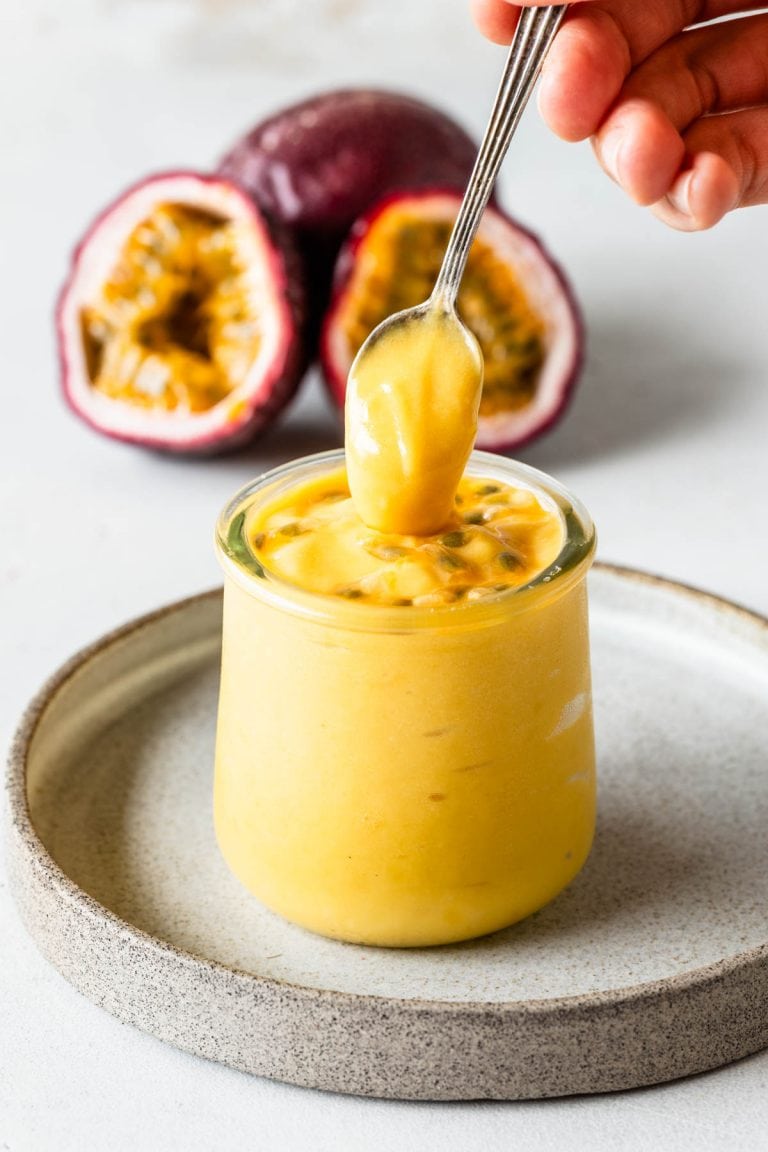
Can you use this same process for other types of curd?
most definitely
Que creme gostoso… imagino num bolo, no doce folhado… que coisa boa!!
Hi, can I make this curd with just the yolks, using whites for meringue on top? Thanks!
I havent tried this recipe with just the yolks, sorry!
I used 3 yolks and two whole eggs. Turned out great. I had a lot of extra yolks around.
Can you do this in a microwave instead of the stove top?
i havent tried it! if i try soon ill update the recipe with microwave instructions. I have to make more curd this week, so maybe Ill give it a go.
6 tbsp of lemon zest? How many lemons for this?
depends on the size of the lemon. about 5-6 medium lemons but it will vary
The best lemon curd recipe ever!! Thank you so so much x
Thank you!!! 🙂
Delicious recipe. Easy to follow instructions.
Oh my goodness, this was so easy to make! I followed the instructions exactly and it worked perfectly. IT IS SO DELICIOUS! I think I could eat it by the spoonful straight from the jar! So good!
Yay so happy you liked it!!! Thank you!
Is it possible to half the sugar if you want a less sweet curd?
I dont know how its going to impact the taste, but you can try.